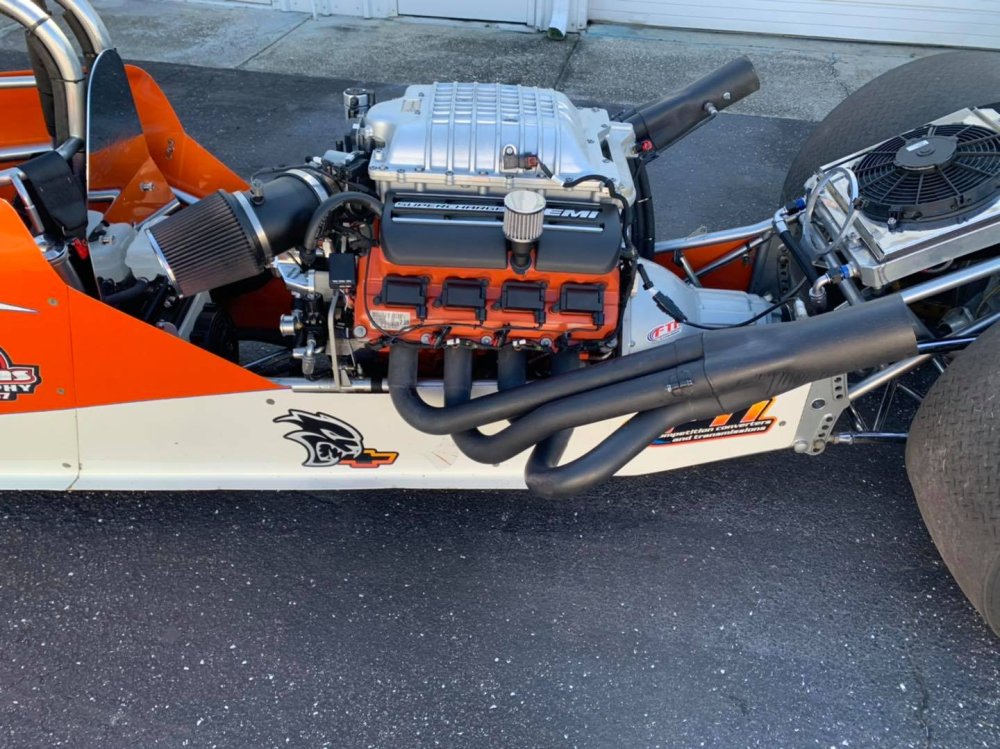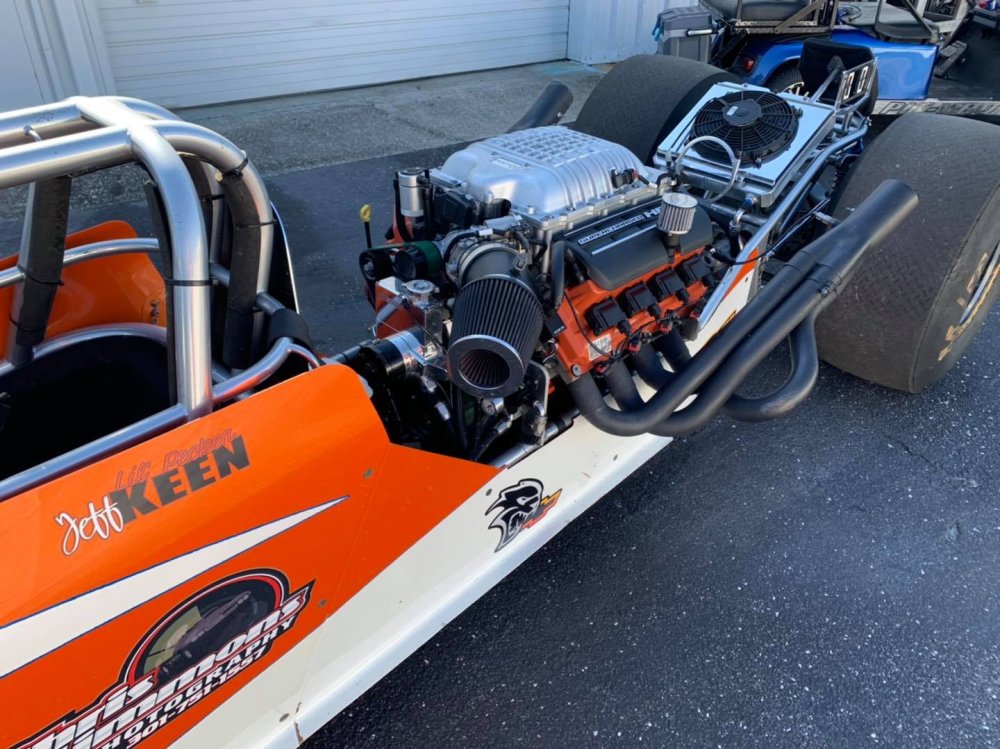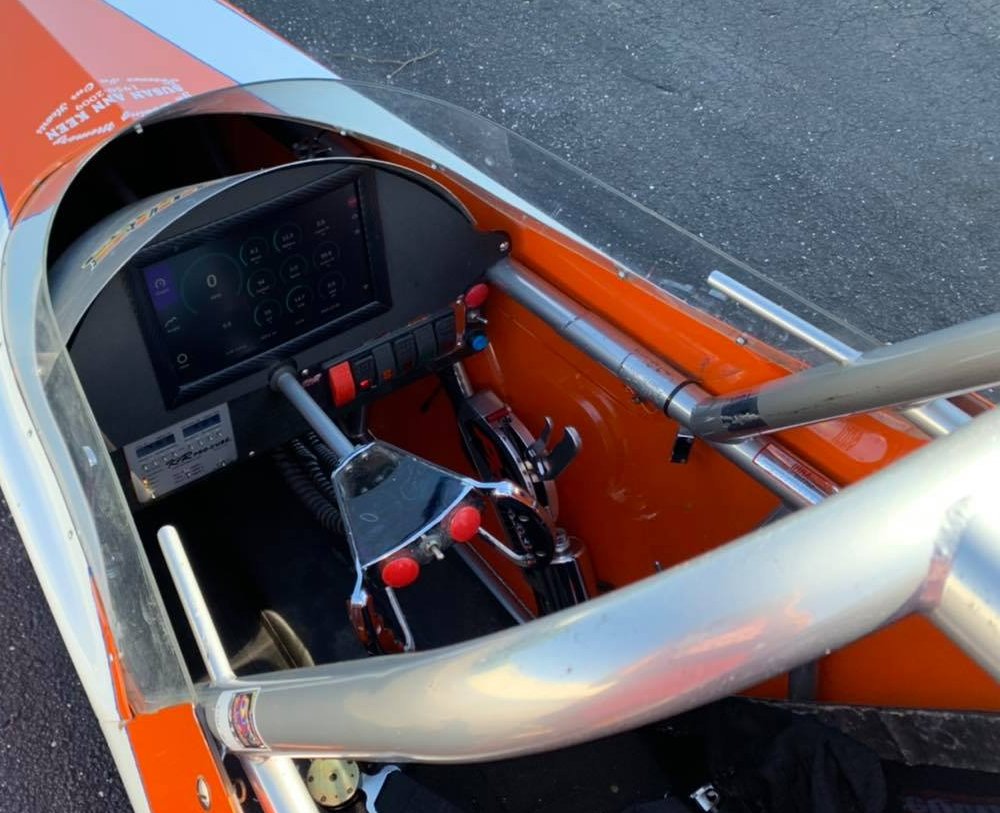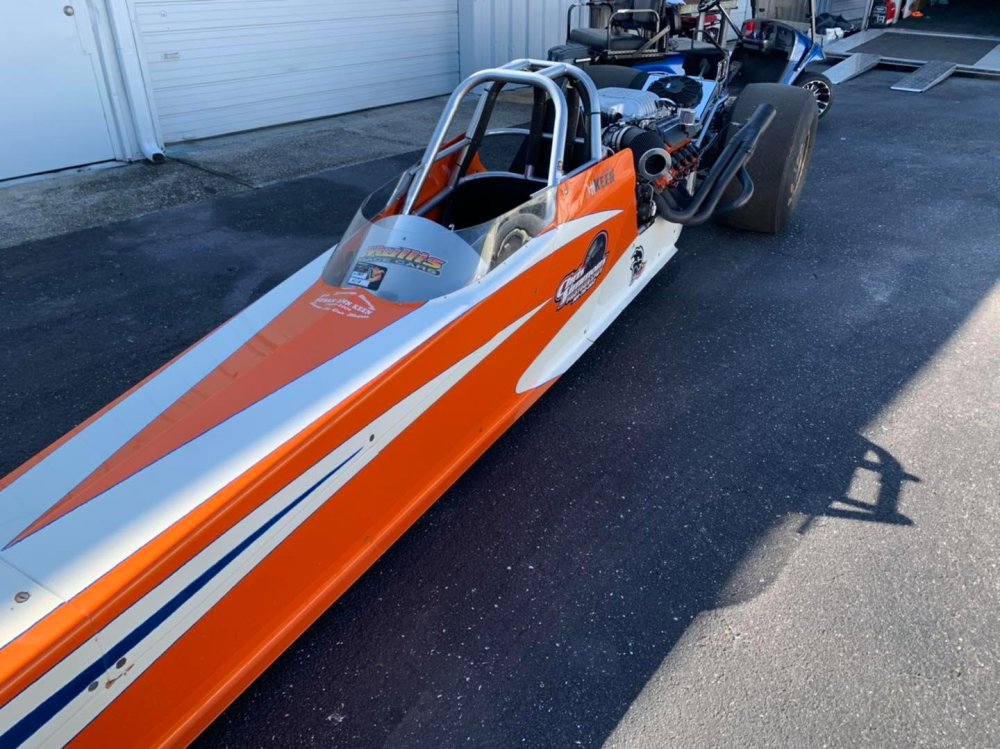Dodge Hellcat Hemi Makes for One Crazy Quick Dragster with Few Upgrades

Hellcat with pulleys, bigger injectors and an E85 tune puts this dragster in the 4-second eighth-mile range.
While it has become common these days to see a Dodge Challenger SRT Hellcat tearing up the drag strip, they generally aren’t the absolute quickest cars at the track. The quickest cars are generally dragsters or “rail cars” with massive big block V8 engines that cost as much as some modern muscle cars. However, a couple of drinking buddies in Florida found that a near-stock Hellcat Hemi packed enough power to put one of these lightweight dragsters deep into the 5-second eighth-mile range. More importantly, with a few common modifications, this Hellcat-powered rail got down into the 4-second range.
For those wondering, running 4s and 5s in the eighth-mile translates to running in the mid-7s and low-8s in the quarter mile. Jeff Keen and DJ Scheid got down to those times with a lightly modified Hellcat Hemi with few upgrades. Best of all, according to the folks at Dragzine, they didn’t spend $50,000 to build the engine. While the chassis of this purpose-built race car was surely expensive, the drivetrain build was not.
Hellcat Power in a Dragster
Keen and Scheid came up with the idea of putting a Hellcat Hemi in a dragster while hanging out at Keen’s shop. At first, Keen passed it off as a joke, but when Shein acquired the Hellcat Hemi from modern Mopar tuning mastermind A.J. Berge, the project became serious in a hurry.

This supercharged 6.2-liter Hemi has the stock bore and stroke, but the bottom end has been strengthened a bit with Mahle rods, Carillo forged pistons and ARP bolts. The camshaft, cylinder heads and supercharger are all stock components.
At that point, the engine was technically ready to run, but there were some unique challenges. This dragster is equipped with a GM Powerglide transmission, so Scheid and Keen turned to ATI Performance Products for a custom midplate and flexplate to connect the Mopar Hemi to the GM transmission.

Finally, on the electronics side, Scheid initially purchased an unlocked factory Hellcat engine computer and wiring harness kit. He uses HP Tuners software to get everything running with the stock tune, but rather than a tradition gauge layout, Scheid used his experience in the information technology world to incorporate a 10.4-inch Android tablet into the cockpit. That provides all of the information needed to keep this Hellcat-powered dragster running smoothly while also handling all of the datalogging during track time.
Hitting the Track
When Keen and Scheid first took the Hellcat-powered rail car to the track, the engine was more or less stock. Sure, it had an aftermarket water pump and fuel pump along with an aftermarket intake and exhaust setup, but it was on the stock engine tune running on 93 octane gasoline. In this form, the Hellcat-powered dragster consistently covered the eighth-mile track in the low-5-second range, with a best time of 5.18.
For those wondering, 5.18 in the eighth-mile roughly translates to a low 8-second quarter-mile time.
While those are mighty impressive numbers for a dragster running a near-stock production road car engine, A.J. Berge suggested that they switch to E85 ethanol blend. This would allow them to tune the car more aggressively, especially once they began looking to add significant amounts of power. Keen and Scheid took Berge’s advice, switching the necessary fuel system components to run E85.

Next, the pair worked with Troy Williams of FTI Performance to find a torque convertor that worked well with the combination of the Hellcat Hemi and the Powerglide transmission. Once that was hammered out, the time came to add more power.
While Keen and Scheid wanted more power, they still wanted to use common parts and keep the budget relatively low. They added a second fuel pump, along with larger fuel injectors (1,340cc), a Hellraiser 2.72 upper pulley and a 10 percent lower pulley, along with a fresh tune from Berge. Scheid estimates that with this setup, the engine is making around 1,050 horsepower.
Breaking into the 4s
After going to the new pulley setup, Keen and Scheid headed back to the track. The dragster ran in the 4.80s, even while still having problems with the torque convertor. They then swapped to another unit from FTI that has proven to work well, handling the massive torque of the tuned Hellcat Hemi.
With some tuning work along the way, the team has gotten down to a best eighth-mile elapsed time of 4.61. A 4.61 eighth-mile converts to a quarter mile time in the mid-to-low-7-second range.
Best of all, there is still more left in the engine. The next step is to turn up the rev limiter from 7,000 to 7,400-7,600 and Berge plans to add more timing. The problem is that the higher engine speeds require better valve springs, so the team will have to do some head-work before going to the new rev limit.
However, once those upgrades have been performed and the tuning work is perfected, this dragster with a Hellcat Hemi will surely go into the low-4-second range.
Photos: Hellcat Dragster Facebook
